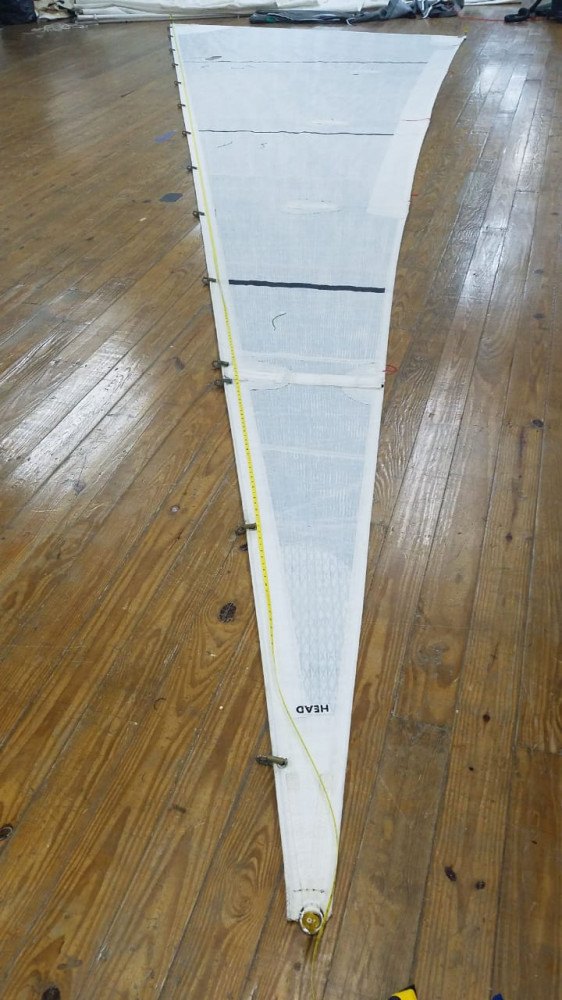Experienced sailors and long time boat owners know when it’s time to replace their sails. They generally know exactly what they want and can communicate this information to the sail maker. This results in the right sail for their boat with only a little input from the sail maker.
Less experienced sailors or new boat owners need a little more help to determine their wants and needs. This is where they have to rely on the knowledge and experience of their sail maker. Here are some tips to help make the process of getting new sails easier.
Do I Need New Sails?
Those that have owned their boats for a long time will know exactly when it’s time to change their sails. They would have their records and know how old the existing sails are and how much use they have seen. Also, they would be able to see the performance change in their boats and sails over time.
For those that just bought or changed boats, or are less experienced, it’s not so easy. Sometimes you can get records from the previous owner but most times you are left on your own to figure things out. Knowing the age of the sail is a good start but more important is to have an idea of the usage. For example, a sail could be 5 years old but only used about 20 times per year day sailing with family and friends in the Chesapeake. Another could be 2 years old but spent that time blue water cruising to and from the Caribbean.
Visual inspection is another way to work out the condition of your sails. This may sound obvious, but newer sails are whiter and stiffer than older sails which are softer and more brown or dirty looking. Just by looking at and touching the sailcloth can give you a good indication of their condition. If the sail threads are damaged or frayed, could also be a sign of age or UV degradation. You should not be able to tear good sailcloth with just your fingers either.
Looking at the shape of the sails when they are flying is always a good indicator as well. If they are full with a lot of “belly” and cannot be flattened using the existing sail controls, that’s a good indication that they are ready to be changed. Not being able to get halyard or outhaul tension is also a sign of stretching and age.
Seeing a decline in sailing performance either speed wise or in your ability to sail closer to the wind is also a good indicator that it may be time to change your sails. Lots of these observations are very hard to see for inexperienced sailors or if the boat is new to you. If in doubt, the best is to get an experienced sailor or your sail maker to take a look for you.
Getting a Quote for New Sails
Once you have determined that your sails need replacing, what then? Time to choose a sail maker if you don’t already have one, and ask for a quote. The more information you can supply to the sail maker, the more accurate the product and quote that you will get.
I once had a customer email me a drawing with luff and foot measurements and some battens and a reef. I took it for granted that he wanted a mainsail with 4 short battens and 1 Reef for a fairly small boat. Imagine my surprise when he showed up with the boat to order the sail. It was for a Mizzen sail on a much larger boat! The quote had to be done over as it was completely wrong. Lessons learned. Get as much information as possible.
From my experience, the most basic information needed when asking for a quote are: 1) the design and length of the boat. 2) the type sail that you want. 3) sail dimensions if you have them or, 4) I,J,P and E measurements. 5) the type of sailing that you plan on doing. With this information a sail maker can send you an accurate quote.
Choosing a Sail Maker
This is for those who do not already have a chosen sail maker. Once you have gotten all the quotes that you requested now you have to choose which sail maker you want to use. Everyone will have different methods but here are a few. References. Speak to other sailors and friends and get their recommendations or experiences.
Ask questions. Once you’ve got your quotes you can start conversations with various sail makers to fine tune or finalize your quote. Sail cloth selection and weight are important depending on the type boat you have and the kind of sailing you plan to do. Depending on the answers and advice you get, it will help you make your decision. How they communicate with potential customers says a lot!
Service. In these modern times all the good sail makers supply really good products. Designs and sail shape are now more the product of science than art. Especially for the cruising market, all the sails are very similar. The only differences visible to all but the most discerning is the different manufacturers logos. So, the big difference is in the support and after sales service from the individual sail makers. The relationships between customers and their sail makers is often a very close one that lasts a lifetime in many cases.
Ordering and Getting your Sails
Once you’ve made your decision it’s time to order your new sails. Now is the time to get the measurements finalized. Thus far we’ve been dealing with mostly generic rig dimensions or general sail sizes. In order for the new sail to fit correctly first time we need accurate measurements. The best is when the boat or old sails are available for the sail maker to take the measurements himself. Depending on the size of the boat and the sails being ordered, this measurement time could take as much as an hour. It’s a good chance for the customer to be present so as to be in agreement with all measurements and details for the new sail.
Sometimes it’s not possible for the sail maker to measure the boat himself. In these cases the customer may be asked to help supply the measurements. Extra care must be taken here that everyone is on the same page regarding the measurements so as not to make mistakes. This is much easier these days with cell phones that can communicate with video in real time.
Once the measurements are finalized the sails are ready to be ordered. At this point a tentative delivery date is set and agreed on as well as a down payment made. When the sails are completed, a further payment is made with the final payment being made once the sails have been delivered to the customer. Different companies have different policies but this is a fairly commonplace process. And that my friends is basically the procedure for replacing your old sails. Hope this was helpful and please feel free to ask questions or comment below.
Bear in mind that some of the links on this website are affiliate links. If you go through them to make a purchase we will earn a commission at no extra cost to you but helps support our website. Keep in mind that we link these companies and their products because of their quality and not because of the commission we receive from your purchases.



